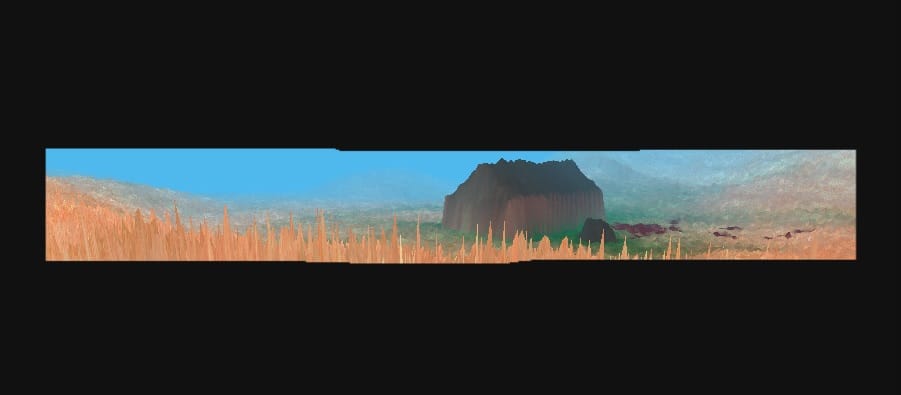See through Ned Kelly’s eyes in this videogame

Ned Kelly is prime videogame material. A man who commanded a gang, set-up a hideout in the Australian bush, and donned iconic homemade steel armor in his final showdown with the police. The bushranger and his tale lends itself to being fastened to the hallmarks of any violent, open-world game. In fact, how the translation might occur has already been imagined, spurred on by Matt Sophos, director of Lost Planet 3 (2013), who showed an eagerness for the history, drama, and “gameplay opportunities” of Kelly and his gang.
Yet, Ned Kelly has remained strangely absent from videogame canon. There was one effort made for the game jam 7DFPS called Ned Kelly’s Last Stand but that has since vanished. And Borderlands: The Pre-Sequel! (2014) featured a bandit wearing Kelly’s armor that was accompanied by an audio log about the decision to miss out leg protection on the suit (the flaw that got Kelly wounded and captured). But that seems to be about it.

(No Name On The Bullet, 1959, via Only the Cinema)
Ian MacLarty has changed that with his newest game simply titled Ned Kelly. It’s made in his tool Vertex Meadow—with which he also made his parody of The Witness—which easily lets you turn any 2D image into 3D terrain that can be explored. By the looks of it, for Ned Kelly, MacLarty has focused on creating a rendition of the Australian bush as Kelly would have been familiar (although its desert colors seem closer in tone to the outback). Most striking, however, is that you view this virtual world through a narrow slit. The idea is that you are seeing through Kelly’s eyes as he wanders in his iconic steel armor, now perhaps the most famous asset of the man as it has come to symbolize that of a flawed hero.
staging them as natural expanses to be conquered by man
There’s something in this visual framing that evokes the frontier westerns that came out of Hollywood in the 1950s. At the time, CinemaScope was introducing widescreen ratios to the film studios, giving directors an expanded lexicon to communicate their stories. The widescreen format especially suited westerns as they often took place upon the large stretches of American desert-wilds. Being able to exaggerate these barren horizontal spaces, staging them as natural expanses to be conquered by man, became a recurring iconography. Not to mention that widescreen was also used to create extra tension in shootouts in westerns, it used to exaggerate the space between dualists who typically stood at horizontal extremes from each other. The use of widescreen to this effect in the western would be expanded upon in the 1960s with Sergio Leone’s spaghetti westerns—the unforgettable widescreen close-ups on squinted eyes in the heat of The Good, The Bad, and The Ugly’s (1966) conclusive Mexican standoff, for instance.

(Ned Kelly’s armor, via State Library Victoria)
However, whereas Hollywood westerns used widescreen to imply a spaciousness, in MacLarty’s Ned Kelly it implies the opposite. We are enclosed in Kelly’s world, one in which he is being hunted down by the police, a large bounty on his head, having to rely on his lifelong knowledge of the bush’s geography to outpace and flank them. There aren’t any police or guns in the game, in fact, you can only walk and jump around, but it is enough to feel the imprisonment by simply seeing through Kelly’s eyes. We have to make a considerable gesture with the computer mouse to tilt his head and see the freedom of the blue sky above. Meanwhile, the tight view has you constantly creating horizons out of the landscape, looking into the distance for a new landmark that, for Kelly, could be an escape route or hiding place.
You can play Ned Kelly right in your browser. It’s also available on itch.io.



